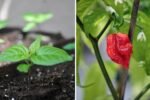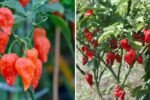Pruning apple trees is one of the most important steps for ensuring a healthy, productive orchard or backyard tree. The timing, method, and care you apply will strongly affect flowering, fruit set, disease resistance, and overall vigor. Many growers prefer late winter or early spring as the ideal pruning window. However, for certain climates or under specific conditions, light pruning in fall (after leaf drop or before deep dormancy) can help shape structure, remove problem wood, and reduce the workload in spring.
This article explores how and when fall pruning can be used effectively, the risks involved, and steps to carry it out safely—so you maximize your spring harvest without harming the tree.
Should You Prune Apple Trees in Fall?
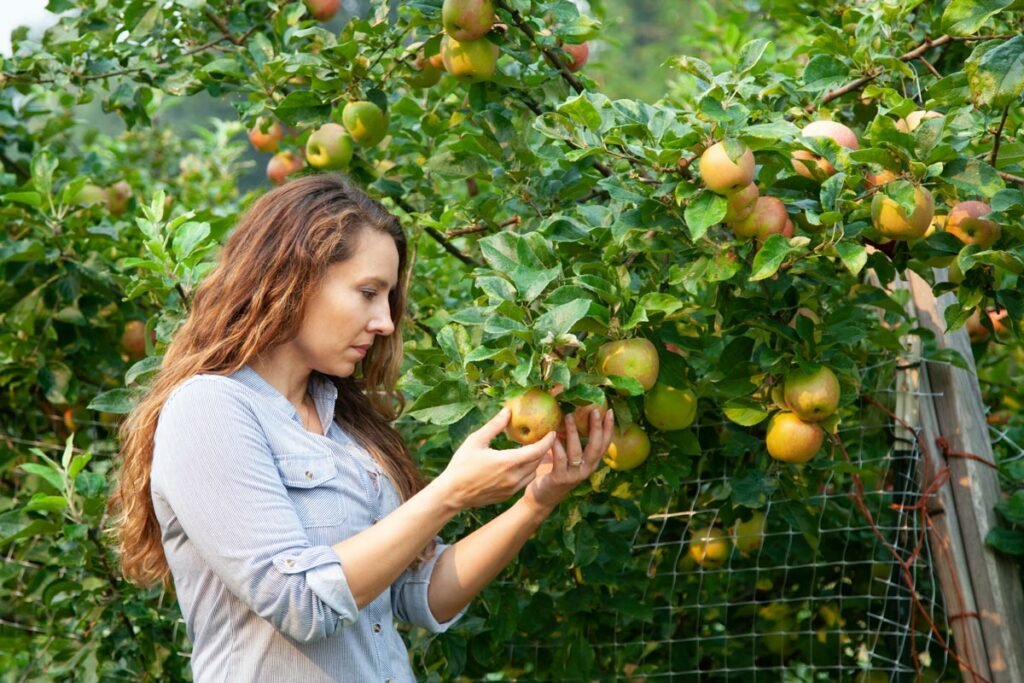
Let’s start with the big question: Is fall a good time to prune apple trees?
Pros of Fall Pruning (When Done Carefully)
- Clear Structure After Leaf Drop
Once leaves have dropped, the tree’s structure is exposed. That makes it easier to see crossing branches, dead wood, or awkward limbs you’d otherwise miss. - Less Sap Bleeding & Fewer Pests
With dormancy approaching, sap flow is minimal. That reduces the chance of heavy bleeding from cuts or attracting pests to fresh wounds. - Light Workload Shifted from Spring
If you remove dead, diseased, or weak branches in fall, you lighten the pruning load in the busy spring period, letting you focus on final shaping and adjustments. - Preparing for Winter
Some lower or inward branches that may catch wind, snow, or ice can be removed to reduce breakage risk during the cold season.
However, experts emphasize that major structural pruning is best reserved for late winter / early spring. Fall pruning should be conservative, cautious, and limited in scope.
Risks & Why Many Experts Advise Against Heavy Fall Pruning
- Delayed Wound Healing
In fall, the tree’s ability to heal is lower since metabolic activity slows. Wounds may remain open longer, making them more vulnerable to fungal infections or decay. - Stimulated Late Growth
Pruning too late may trigger the tree to sprout new growth (vigorous shoots) that won’t properly harden off before frost, making them vulnerable to winter freeze damage. - Winter Injury Risk
Fresh cuts might expose the tree to structural weakness or cold damage. Cuts heal slower in cold, and frost can damage tender new wood near the cuts. - Reduced Fruit Spurs or Flowering Wood
Apple fruiting occurs on spurs that are formed on 2–3-year-old wood. Overzealous pruning in fall might remove productive spurs unintentionally and reduce next year’s yield. - Regional Climate Variability
In colder climates, fall pruning is more risky due to extended freeze periods. In milder climates, limited pruning may be safer—but still must be done with restraint.
Because of these factors, many authoritative guides discourage “heavy” fall pruning and instead recommend light, corrective pruning only, saving the major cuts for dormant season. (Sources from University extension, orchard guides)
When & Where (Timing & Conditions) for Fall Pruning
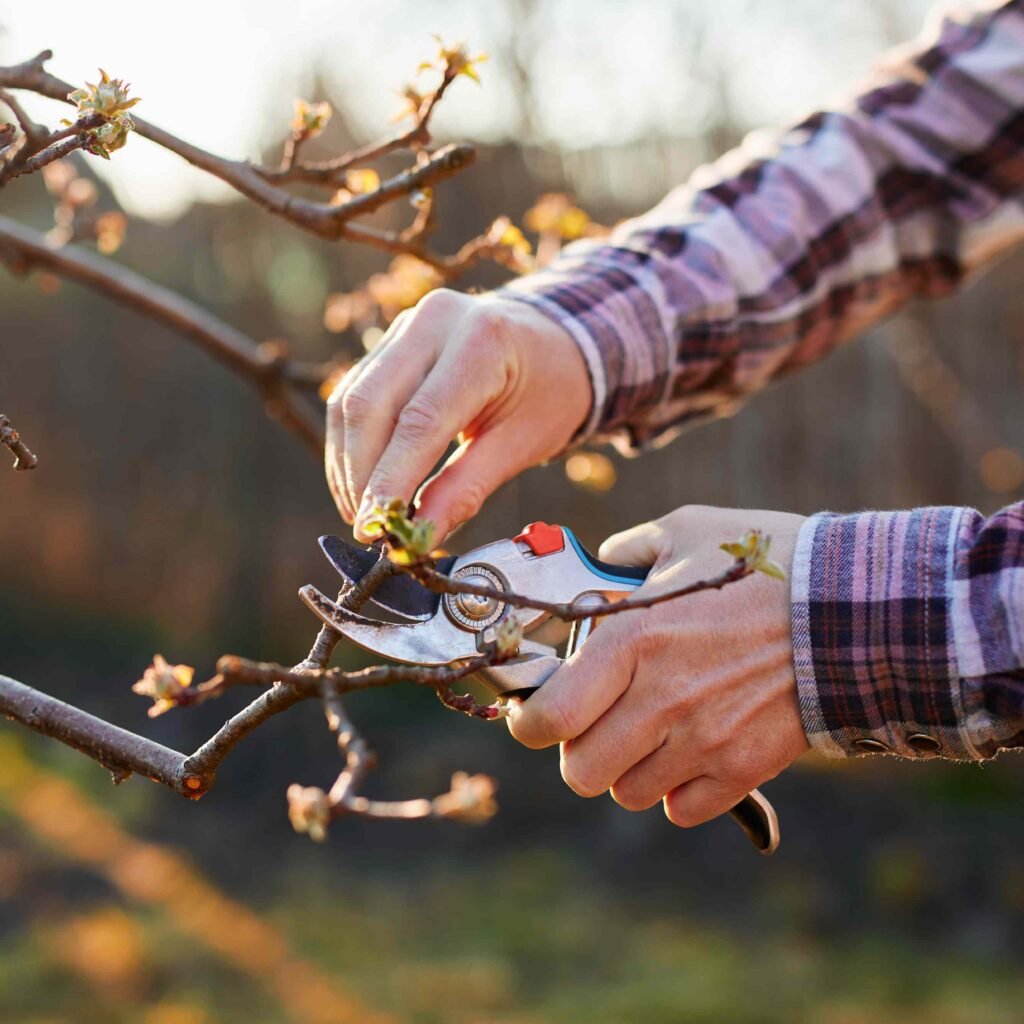
If you decide to prune in fall, here’s how to pick the right timing and conditions:
- Prune after leaf drop but before deep dormancy
Wait until most leaves have fallen and the tree has begun to slow down for winter, but before very cold temperatures set in. This window may vary depending on your climate zone. - Avoid pruning just before a hard freeze
If a severe frost or freezing weather is expected immediately after pruning, cuts won’t heal well and new growth (if any) may be damaged. - Check soil and moisture conditions
Work only when the ground is not saturated or frozen, so your footing is stable and you don’t compact roots. - Limit the scope
In fall, stick to clean-up work: removing dead, diseased, or broken branches, and thinning minor internal limbs. Avoid large structural cuts.
If you’re in a region with very cold winters, it’s safer to hold off until late winter for heavier shaping.
How to Prune Your Apple Tree in Fall: Step‑by‑Step Guide
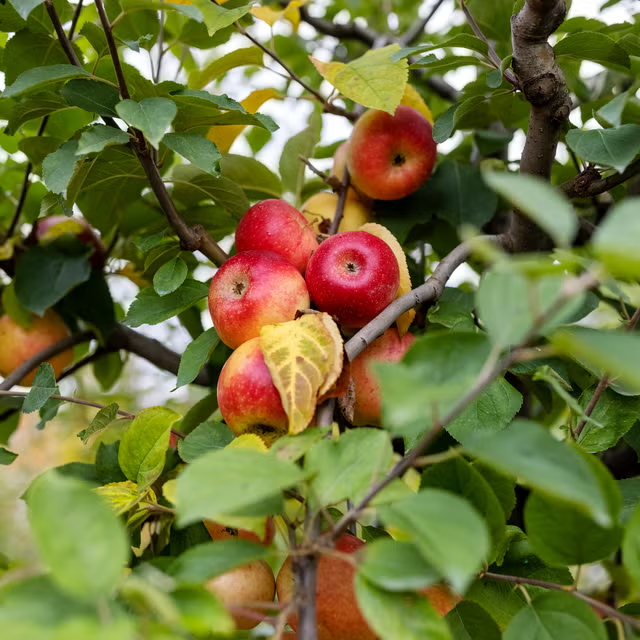
Here’s a stepwise guide you can follow to prune apple trees in fall carefully and effectively:
1. Gather Your Tools & Sanitize
- Sharp bypass pruners for small branches
- Loppers or pruning saws for larger limbs
- Gloves, eye protection
- Pruning sealer or cut‑dressing (if you prefer; though many guides suggest clean cuts heal naturally)
- Disinfectant (e.g. alcohol or bleach solution) to clean tools between cuts, especially if removing diseased wood
Always make clean cuts. Avoid tearing bark or leaving stubs, which invite pathogens.
2. First Pass: Remove the “3 D’s”
Scan the tree and remove:
- Dead wood
- Diseased or decayed branches
- Damaged or broken limbs
These are priorities, since leaving them poses risks to tree health. Prune them out first, cutting back to healthy wood or the branch collar.
3. Remove Crossing, Rubbing, or Inward‑Growing Branches
- Branches that cross and rub should be thinned—remove one entirely at the base.
- Eliminate inward-growing branches that crowd the tree’s center (they block light and airflow).
- Shorten long inward shoots to maintain structure.
4. Thin Excess Growth / Suckers / Water Sprouts
- Suckers arise from the base or roots—remove them.
- Water sprouts are vigorous vertical shoots—prune them off as they are nonproductive.
- Lightly thin crowded areas, but avoid removing more than about 10–15% of live wood in fall pruning.
5. Shape & Balance
If the current framework already is solid:
- Do not overdo heading cuts—prefer thinning to preserve natural branch shapes.
- Maintain or encourage a central leader (one main upright stem) with well-spaced lateral scaffold branches, not too vertical.
- Maintain good crotch angles (aim for wide angles, e.g. 45°–60°) for branch strength.
If the structure is weak, do not force major changes in fall—reserve major restructuring for dormant season.
6. Clean Up & Sanitize Cuts
- Clean out debris, prune clippings, leaves.
- Optionally apply wound care if local conditions favor fungal or disease pressure.
- Re‑sanitize tools after cutting diseased wood.
That’s a cautious fall pruning. The goal is not radical transformation but structural tidying and removal of problematic wood.
What to Do in Spring Versus Fall — Complementary Pruning Strategy
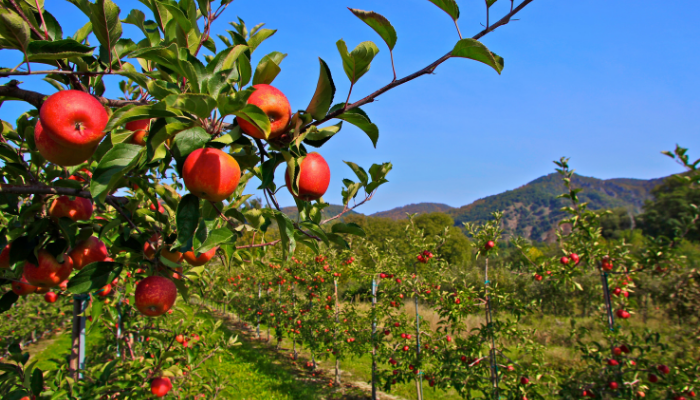
Because fall pruning is limited, you’ll still need a more comprehensive pruning in late winter or early spring (the dormant period). Here’s how the seasons’ pruning complement each other:
| Season | Pruning Focus in Apple Trees |
|---|---|
| Fall (optional, light) | Clean‑up, remove problem wood, minor thinning |
| Winter / Early Spring | Major shaping, structural pruning, thinning, spur management |
In spring, you can:
- See the full skeleton before new buds emerge
- Make larger cuts with quicker healing
- Shape the canopy more aggressively
- Remove large branches without risking winter damage
Multiple sources and extension recommendations strongly endorse doing the bulk of pruning in the dormant season for best results. (E.g., University extension, orchard guides)
Tips & Best Practices for Spring Harvest Success
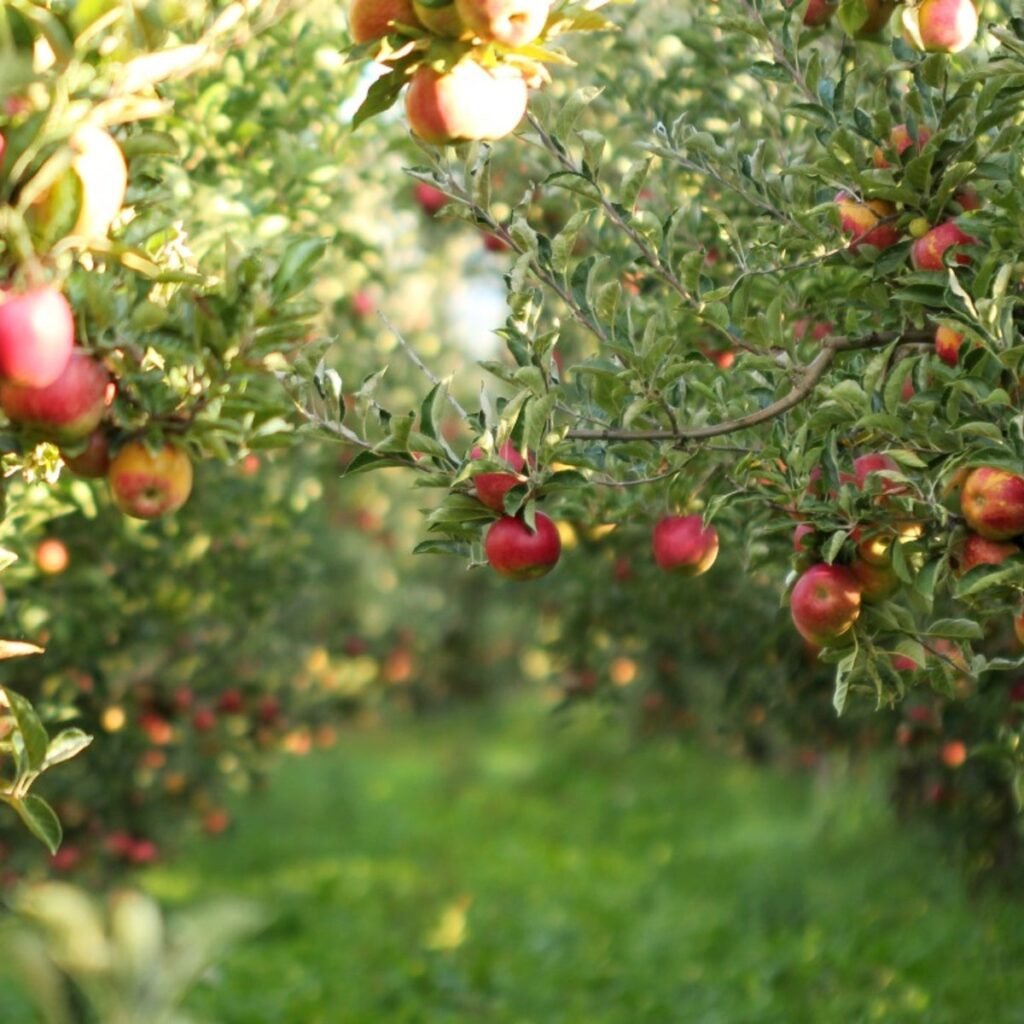
Even with prudent fall pruning, your spring pruning and overall orchard care will determine the ultimate yield. Keep these in mind:
- Don’t prune away too many fruiting spurs
Apple fruit typically grows on spur wood 2–3 years old. Avoid cutting off large quantities of potential fruiting wood. - Keep pruning moderate
Over-pruning can stimulate excessive vegetative growth (suckers, water sprouts) and reduce fruit quality. Some guidelines suggest removing no more than 20–25% of live wood in a season. - Ensure good air circulation and sunlight penetration
The more light and airflow inside the canopy, the better fruit set, sugar development, and disease resistance. - Balance growth and fruiting
A very vigorous tree may need more thinning; a weak tree less. Always consider vigor when determining pruning intensity. - Watch for disease & pests
Early detection and removal of diseased wood helps reduce carryover pathogens into spring. - Maintain tree health
Adequate fertilization, mulching, irrigation, and soil care support recovery from pruning and boost flower and fruit production.
When Not to Prune and Common Mistakes to Avoid
- Don’t prune in early fall or too late — don’t cut late when the tree is still too active or just before deep dormancy; you risk frost damage or unwanted growth.
- Never remove more than a safe proportion of wood — avoid heavy cuts in fall.
- Avoid stub cuts — always cut just outside the branch collar.
- Don’t leave crossing branches or narrow angled limbs that can split under fruit load.
- Avoid pruning during wet, frozen, or extremely cold conditions — cuts do not heal well and risk infection or damage.
- Don’t skip spring pruning — rely on fall cuts only as supplemental, not primary shaping.
Should You Ever Skip Fall Pruning?
In many cases, yes. If your climate has cold winters, or your tree is already in good structural shape, skipping fall pruning entirely may be safer and simpler. Many experts recommend:
- Do nothing in fall, then perform all structural pruning in late winter.
- Use fall only for emergency pruning (broken/diseased limbs).
- Focus on spring pruning, when the tree is fully dormant and wounds heal best.
That approach avoids most of the risks associated with fall pruning, while still letting you refine structure when conditions are ideal.
Sample Timeline (for a Temperate/Subtropical Region)
Here’s how you might plan pruning across the seasons if you choose to include fall pruning:
- Late Fall / Early Winter (after leaf drop)
- Remove dead, diseased, broken limbs
- Thin minimal internal wood
- Clean up pruning debris
- Winter / Early Spring (before bud break)
- Major structural pruning
- Thinning of crowded branches
- Spur management
- Shape adjustment
- Summer (if needed)
- Remove water sprouts or overly vigorous growth
- Light corrective pruning
This balanced approach allows you to manage structure and workload while protecting tree health.
Final Thoughts
Pruning is a central art and science in apple tree care. While late winter / early spring remains the ideal time for most major pruning, light fall pruning, done with caution and restraint, can support structural maintenance, cleanup, and workload reduction. The primary focus in fall should be removal of dead or hazardous limbs, minimal thinning, and preparing the tree for winter.
Whatever your strategy, always use clean, well-sharpened tools, make precise cuts, and avoid overdoing it. Combine pruning with good soil care, pest/disease management, and thoughtful tree nutrition, and your apple trees will reward you with vibrant growth, healthy blossoms, and a plentiful spring harvest.
If you like, I can provide a region‑specific pruning schedule (for your climate), or a visual pruning plan for your tree. Do you want me to draft that for your area?

